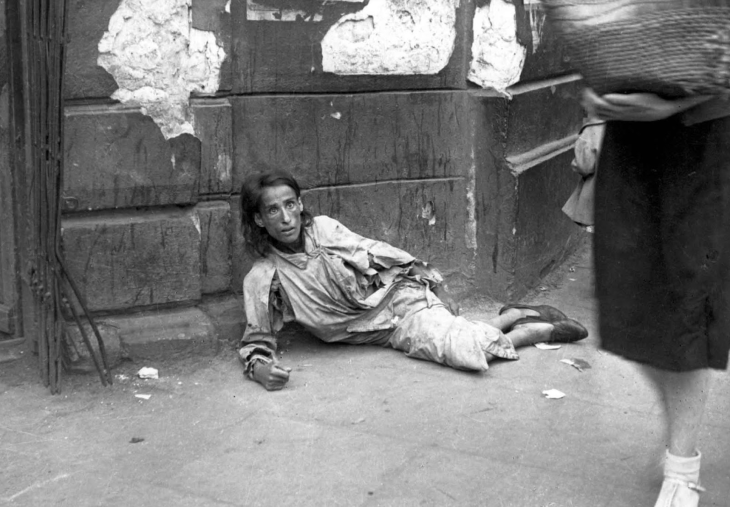
Starving woman inside a Warsaw ghetto (1941)
As we all know, death is a part of life – over our history there have been multiple mass events of death, not to mention the fact that 151,600 people die every day. Parents, siblings, friends and everyone in between… to be reminded of this is a pretty tough pill to swallow.
Life is cyclical, so if you take a quick look at the other side of the story, you find out that 363,000 people are born everyday. Being exposed to images of death and suffering is extremely important for perspective. It begs the question though – is it ethical to view such provocative images? Images that capture a moment of the worst aspect of life itself?
R Tooth (2014) puts forward the complex dilemma that we face when engaging with these images;
“If you had died a violent and unjust death, wouldn’t you want the world to know all the details surrounding that death? On the other hand, in showing those images, are we perhaps feeding a propaganda machine and fuelling more conflict?”
So can these photos escalate conflict? Leave it unchanged? Bring it to a halt?
Alan Kurdi, a Syrian boy who washed up on the shores of Turkey in 2014, died as he and his family were trying to escape Syria. A Turkish journalist snapped the photograph, and within days it was plastered on every screen and talked about on every station. Everyone wanted to do something – the world can’t stand for this carnage any longer.

“Photo of my dead son has changed nothing” – Father of Alan Kurdi, who drowned trying to flee the war-torn country.
Only, nothing happened. His father Abdullah pointed out the biggest problem with photos of death, especially in our society now – it leads to even the most out-of-touch, middle class teenager living in the western world to feel bad while looking at this photo, share it, then go back to watching Netflix.
“The politicians said after the deaths in my family: Never again! Everyone claimed they wanted to do something because of the photo that touched them so much. But what is happening now? People are still dying and nobody is doing anything about it.” – Abdullah Kurdi

Credit: @khalidalbaih
Which begs another question – for us especially who are just not exposed to these types of situations. Do these photos fall under the category of entertainment?
Yes, they do – the difference though is that this is completely unintentional. It’s a macabre form of entertainment, one that engages us, makes us think and reflect, and makes us even sympathise with those currently involved in life-threatening conflict.
But that’s it. That’s where it ends, we can only sympathise; never empathise.
Which is exactly why I believe that these photographs, at least in our present day, act as entertainment.
I’d also like to quickly distinguish the difference between photos of suffering and death today, and photos taken over the last century. Pictures from WWI and WWII, among other documented genocides and iconic photos, tend to be shone in a different light. Those photos are not consumed by society the same way that present-day photos are – it’s practically instantaneous today, and looking into historically controversial photographs acts more as education rather than entertainment.
It is impossible in our lives to understand what certain people/communities go through without directly going through the same thing, and in many ways, seeing a different side of society is somewhat satisfactory to us. The fact that we are able to even look at whatever atrocity is happening in the world and take a break from our reality to look into another is what puts us in a position of privilege – this separation and ability to snap in and out of sympathy just by looking at other peoples misfortune is what makes this a category of entertainment, completely unintentional, but entertainment nonetheless.
So consume as much stressful content you can – its important to be aware of everything life can hit you with, and its important to recognise the privilege that we have living in developed countries. Some people will see images of suffering, have a moment of reflection and move on, and for others it might spark a fire in them to make a change. Whatever the case, stay open, and humble.
Sources
R Tooth, July 2014, “Graphic content: when photographs of carnage are too upsetting to publish”, The Guardian
J Ensor, September 2016, “‘Photo of my dead son changed nothing’ says father of drowned Syrian boy Alan Kurdi”, The Telegraph